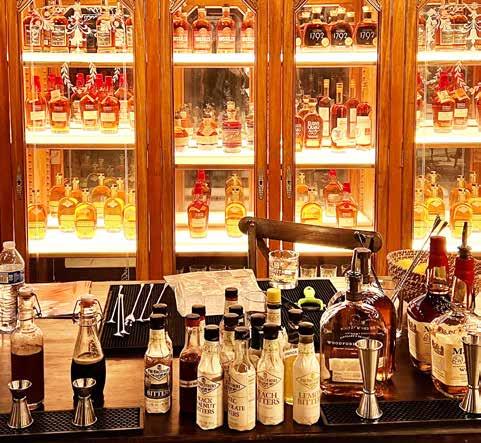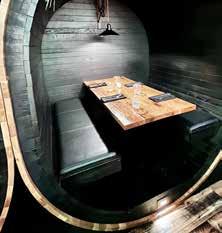
4 minute read
The BUZZ about Bourbon
Bourbon County, in Kentucky, was established nearly 240 years ago, in 1785, at a time when settlers were looking for alternative ways of marketing their corn and other grain crops. They realised that distilling it prevented it from spoiling, and putting it in barrels made it easy to transport, so Bourbon County became a hub for the whiskey trade, with the Ohio and Mississippi rivers used to transport the barrels, stamped “Bourbon County”, to New Orleans. If you’ve visited New Orleans, you’ll likely have walked down the 12 blocks of Bourbon Street in the French Quarter, famous for all its bars.
The long journey aged the whiskey, with the oak wood from the barrels lending a mellow flavour and amber colour, and as it became more and more popular, it became known as simply ‘Bourbon’. 95 percent of the world’s Bourbon is produced in Kentucky, so we recently made a visit to Louisville to find out more of the history, learn how Bourbon is made (and sample it too), and what this means for us here in Canada.
Apart from KFC; the famous sons of Abraham Lincoln, Muhammad Ali, George Clooney, Tom Cruise, and Johnny Depp; the Derby (150th last month!); and the Corvette, disco ball, and baseball bat factories (I’m reminded here of the Monty Python sketch “What else did the Romans do for Britain?”); we discovered that George Garvin Brown created Old Forester, the first bourbon to be sold in sealed glass bottles instead of barrels, in 1870 on Louisville’s Whiskey Row, also home to the Frazier History Museum, the starting point of the Kentucky Bourbon Trail, which is celebrating its 25th anniversary this year.
And we learnt that with a population very similar to Alberta, there are currently more than two and a half barrels of bourbon aging in Kentucky for every resident. So what’s the big deal with Bourbon?
In 1964, Congress officially declared Bourbon an indigenous product of the United States, meaning all bourbons are whiskies but not all whiskies are bourbons - no other country can make a spirit and call it Bourbon – this whiskey can only be made in the United States. Having said that, bourbon can be made anywhere in the US, as long as it is made to the very strict rules, some of which date back to the early 1900s.
To be called Bourbon, the whiskey must:
• Be made with a minimum of 51 percent corn. The remainder of the mash bill is malted barley, rye, or wheat.
• Be aged in new, charred oak containers. Note that the law doesn’t mention ‘barrel’, just charred oak containers!
• Be distilled to 160 proof (80 percent ABV) or less. A higher proof spirit would lose much of the flavour of the grains, and at 160 percent proof there are small amounts of congeners in the spirit that add to the flavour of bourbon. Congeners are produced naturally and are by-products of the fermentation and distillation process. Examples would be esters, tannins, and aldehydes.

• Be stored at no more than 125 proof (62.5 percent ABV). The higher the proof of the bourbon, the more quickly it will pull flavours from the oak, so this rule is to prevent too much extraction from the wood so that it doesn’t taste too ‘oaky’.
• Be bottled at no less than 80 proof (40 percent ABV). This is a rule for all whiskies.
• Contain no flavouring or colouring agents. Only water can be added to the spirit when it is removed from the barrel.
There are two more rules:
• ‘Straight Bourbon’ is aged for at least two years in charred oak containers. Straight bourbons aged between two and four years must have an age statement on the label declaring the age of the youngest spirit.
• ‘Bottled in Bond Bourbon’ is aged a minimum of four years, and has to be distilled in a single season, and bottled at







